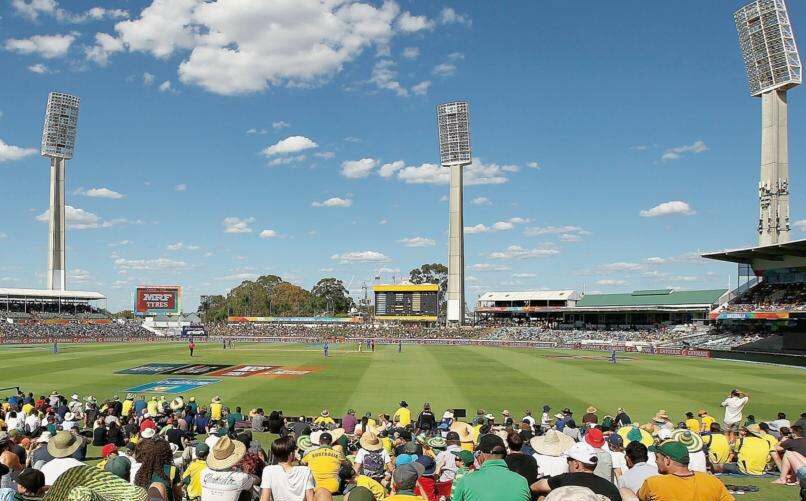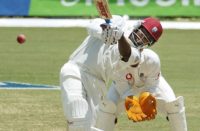Tristan Lavalette locates a love-hate relationship as the end looms for one of cricket’s most iconic grounds…
Known universally simply as the WACA, the Western Australian Cricket Association Ground has always been perceived as “unique”. It holds the distinction of being regarded as the fastest pitch in the world; a wicket so terrifying that it has developed a kind of reverence and mystique throughout the years.
This is made clear by the smattering of tourists, mainly from the Sub-continent, taking photos outside the ground nearly daily.
It is an iconic landmark in Western Australia’s capital yet the WACA looks tired and dated, the very antithesis of Perth’s desire and newfound energy to transform from a sleepy small city to a thriving metropolis. Sadly, the ground has become a symbol of Perth’s neglected past; an eyesore that is an unwanted reminder of failed proposals and redevelopments.
The WACA is also distinctly unique because it provokes such a differing spectrum of emotions; it is beloved by cricket romantics, but generally loathed by spectators who actually have to endure its uncomfortable innards. It is hard to find another sports ground anywhere in the world which boasts such a startling juxtaposition of sentiment.
This was made evident recently when news broke that the WACA would no longer host international matches featuring England, India or South Africa from 2018-19. These prominent matches will be played at the new Perth Stadium expected to hold about 60,000 spectators when completed in early 2018.
Big Bash matches will also be moved, leaving the WACA to become a boutique stadium capable of holding 10,000-15,000 spectators. It will host international countries that draw smaller crowds, while Sheffield Shield and domestic limited overs matches will also be played there.
It signals the beginning of the end, but most close observers knew this long ago after repeated failed attempts at redevelopment. The cash cow of Australian Rules football was last a tenant 15 years ago making it difficult for the WACA to remain financially viable. It marks the death knell of the WACA as Perth’s premier cricket stadium.
Drop-in pitches will be used at Perth Stadium in the hope that the WACA’s inimitable characteristics – sharp bounce and rapid pace from its hard surface – can be replicated but pessimism will continue to linger.
The announcement was met with a predictable amount of derision from cricket traditionalists and WACA devotees. Again, most of the loud noise emanated from those who don’t – or rarely – frequent the ground.
Basic amenities such as toilets are inadequate and buying food and beverages can take an eternity. Some probably missed Adam Gilchrist’s blistering 57-ball Ashes century in 2006 because they were stuck in the queues.
Worse, there is barely any shade provided for the bulk of the ground, which is not only uncomfortable, but presents a major health risk as interminable sweltering weather strikes Perth almost daily during the summer.
Every Ashes, it is hard not to wince at the sight of English (and Aussie) fans walking around the city post the day’s play. Most supporters’ faces are akin to Western Australia’s outback terrain of red dust. Sunburnt and dishevelled figures trudge around with second-degree burns.
It is easy to see why many locals, especially families, have decided to neglect going to the cricket, bar t20 matches played in the evening. The WACA’s attendances have generally been dwindling – only 11,000 attended the ODI tri-series final between Australia and England in February – and no Test match was played there last Australian summer.
It has been a sad plight for such a revered ground, where some of cricket’s most indelible moments have been played. No doubt a by-product of its famed pitch, aggressive and highly entertaining cricket has been a consistent spectacle at the WACA apart from the very occasional sedate period where the deck was rendered lifeless.
The WACA has always conjured a healthy dose of anticipation and excitement – the perfect antidote after the staid Adelaide Test, usually the preceding match in the Australian cricket calendar.
The WACA spawned some of cricket’s most visceral images: the sight of athletic pacemen, bounding into the crease off long run-ups; think Dennis Lillee complete with his swinging gold chain and thick moustache charging towards a quaking batsman. Batsmen risking their limbs, and lives, facing hostile bowling; think Alex Tudor in 2002 being felled and subsequently retiring hurt from a Brett Lee thunderbolt.
You could always sense something was about to happen just by looking at the comical sight of a wicketkeeper planted halfway towards the boundary, reinforced by a plethora of catchers.
Cricket was at its rawest at the WACA, resulting in players being probed both physically and mentally like never before. But the lingering shadow of doubt didn’t just hover over batsmen, and flummoxed spinners unable to extract sufficient turn from the rock hard pitch. Fast bowlers, salivating at the prospect of inflicting some revenge, often bowled recklessly like infamously in 1999 when an immature and cocksure Shoaib Akhtar was dismantled by Ricky Ponting and Justin Langer. Fragments of his ego can still be found on the WACA’s turf.
Behind the bravado, the key for pace bowlers to succeed at the WACA was with consistent line and length. Brett Lee may have been unnerving, but Glenn McGrath’s unwavering accuracy proved more threatening. To be truly successful at the WACA, a bowler needed to be level-headed, accurate and consistent.
This combination never better materialised than when Curtly Ambrose scythed through Australia’s ashen-faced batting order in 1993 with the surreal and macabre figures of 7-1 during one of the most astonishing spells in Test cricket history.
The West Indies with their bevy of intimidating pacemen were impregnable at the WACA during their heyday, and similarly, Australia have enjoyed much success at the venue over the years and particularly relished roughing up England there.
Even though the WACA was generally a fast bowler’s nirvana, batsmen adept on the back foot and at attacking square of the wicket were rewarded with scoring opportunities. Runs could always be scored at breakneck pace.
Tall spinners, such as Anil Kumble, found a liking to the WACA, too, as they were able to pose problems with bounce.
For international players, the WACA was considered the barometer of the Australian tour. Those that succeeded, their memorable feats would be etched in folklore for eternity like Roy Fredericks’ stunning counterpunch against Lillee and Thomson in 1975, or Sachin Tendulkar’s century as an 18-year-old to confirm his innate greatness.
The Australian cricket summer will feel slightly diminished without the WACA’s manic charm. It wasn’t pretty, but cricket there was nearly always dramatic and compelling.
The WACA still remains, for now anyway, but its days are clearly numbered. For most Perth cricket fans, they will be breathing a sigh of relief.
Unfortunately, that’s the sad truth.
This piece originally featured in The Cricket Paper on Friday October 16, 2015















